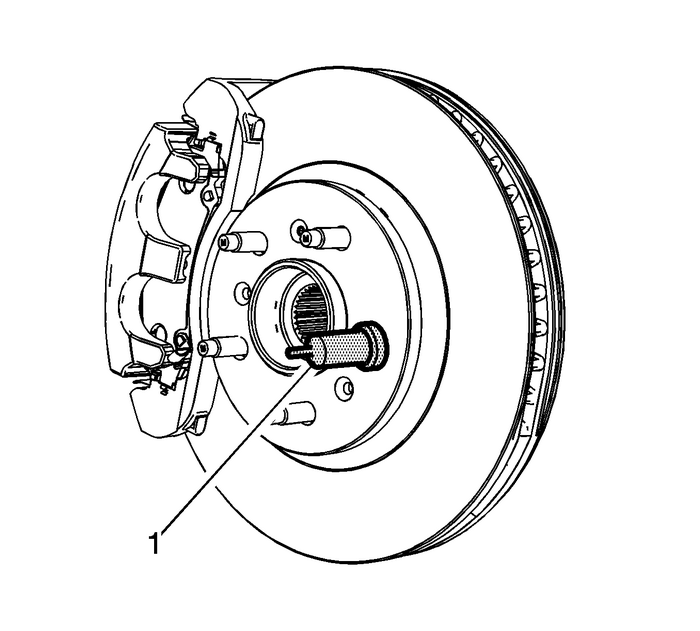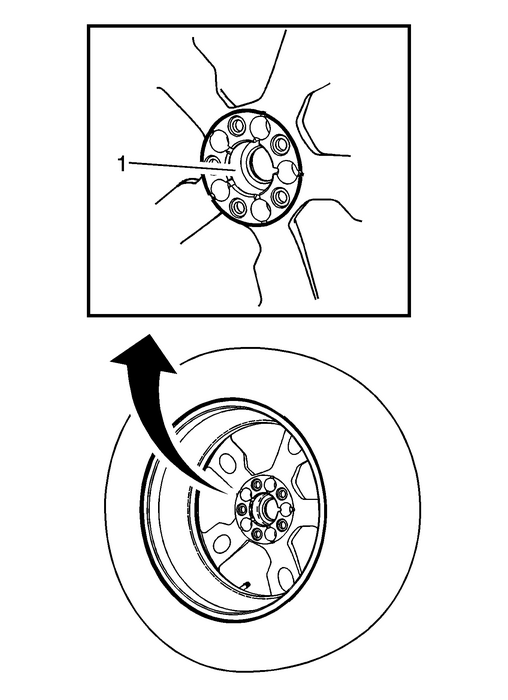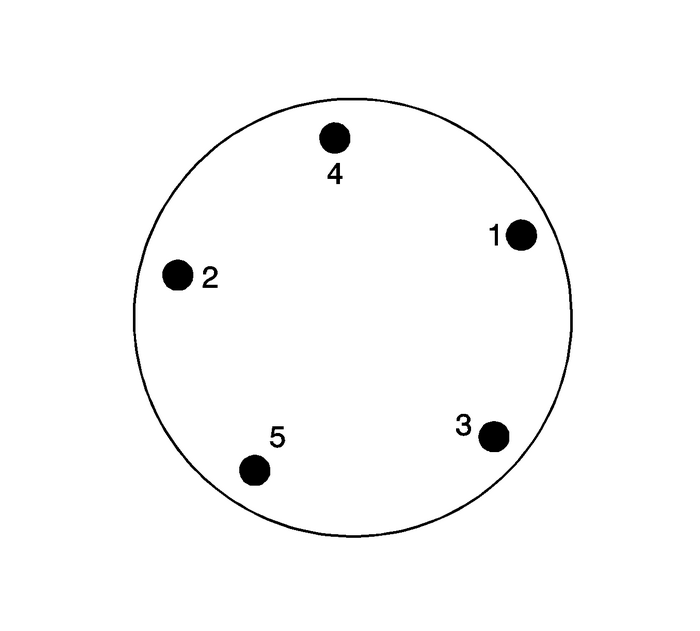Chevrolet Equinox Service Manual: Tire and Wheel Removal and Installation Wheels
Removal ProcedureRaise and support the vehicle. Refer toLifting and Jacking the Vehicle.If rotating the tires, refer toTire Rotation.Remove the wheel center cap, if equipped.Remove the wheel center cap nuts, if equipped.Remove the wheel nuts.Remove the tire and wheel assembly.
Caution:Never use heat to loosen a tight wheel bolt or nut. This canshorten the life of wheel and damage wheel bearings.
If the tire and wheel assembly is difficult to remove or cannot be removed, performthe following steps:Apply a small amount of penetrating oil to the wheel nuts, and the center hub. Allowa few moments for the penetrating oil to work.Loosen each wheel nut-2-complete turns.Lower the vehicle.Rock the vehicle from side to side.Repeat the procedure if necessary.If the tire and wheel assembly still does not loosen, perform the following:Start the engine.Allow the vehicle to move forward, and quickly apply the brakes. Repeat this procedurein reverse.Repeat this procedure if necessary.With the tire and wheel assembly loose, raise and support the vehicle.Remove the tire and wheel assembly.Caution:Before installing wheels, remove any build-up of corrosion onthe wheel mounting surface by scraping and wire brushing.Installing wheels without good metal-to-metal contact at themounting surfaces can cause wheel bolts or nuts to loosen, whichcan later allow a wheel bolt or nut to come off while the vehicleis moving. Wheel bolts or nuts must be tightened in sequence and toproper torque to avoid bending the wheel, brake drum orrotor.
Note:
Wear approved safety glasses when performing the following service procedures.DO NOT use power grinders to clean any of the brake rotor or brake drum to wheel contactareas.Using a wire brush or wire wheel, clean the rotor to the wheel or brake drum to wheelhub contact area.Using the appropriate special tool, clean the contact areas of the wheel to brakerotor or brake drum.
Using the appropriate special tool-(1), clean the surface around the wheel studs.Clean the threads of the wheel studs. If the threads are damaged, replace the wheelstud.For the front wheel stud replacement, refer toWheel Stud Replacement.For the rear wheel stud replacement, refer toWheel Stud Replacement.After cleaning all the contact areas, use brake clean or denatured alcohol to removeall the penetrating oil, dirt and debris from the wheel nuts, brake rotor or brakedrum.Inspect and clean the contact area of the wheel. Refer toWheel Mounting Surface Check.Installation Procedure

Note:Only apply a small amount the lubricant to the pilot hole of the wheel and NOT thewheel bearing flange. DO NOT apply it to the entire pilot hole of the wheel.
Apply a small amount of lubricant to the inner diameter of the wheel hub pilot hole-(1)-whereit contacts the with the wheel bearing/hub flange.Install the tire and wheel assembly.Hand start the wheel nuts.
Caution:Improperly tightened wheel bolts or nuts can lead to brakepulsation and rotor damage. In order to avoid expensive brakerepairs, evenly tighten the wheel bolts or nuts to the propertorque specification.
Using the proper size socket and the torque wrench, tighten the wheel nuts in theproper sequence to 190-Y (140-lb-ft).Install the wheel center cap, if required.Install the wheel cap nuts, if required.Remove the support and lower the vehicle. Rear Wheel Drive Module Clutch Housing Replacement Wheels
Rear Wheel Drive Module Clutch Housing Replacement Wheels
Rear Wheel Drive Module Clutch Housing ReplacementCalloutComponent NamePreliminary ProceduresRaise the vehicle. Refer toLifting and Jacking the Vehicle.Remove the propeller shaft from the differential ...
 Tire Pressure Indicator Sensor Replacement TPMS
Tire Pressure Indicator Sensor Replacement TPMS
Removal ProcedureRaise the vehicle on a suitable support. Refer toLifting and Jacking the Vehicle.Remove the tire/wheel assembly from the vehicle. Refer toTire and Wheel Removal and Installation.Note: ...
Other materials:
Generator Replacement (LFX) Starting System
Removal ProcedureDisconnect the negative battery cable. Refer toBattery Negative Cable Disconnection and Connection.Reposition the positive battery cable boot at the generatorterminal.Disconnect the engine harness electricalconnector-(1) from the generator.Remove the positive battery cable nut-(2) a ...
